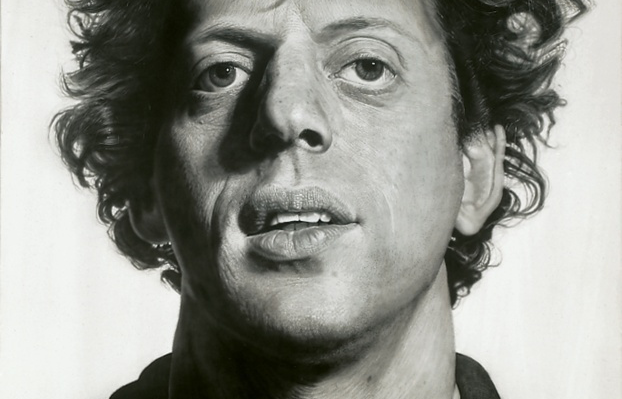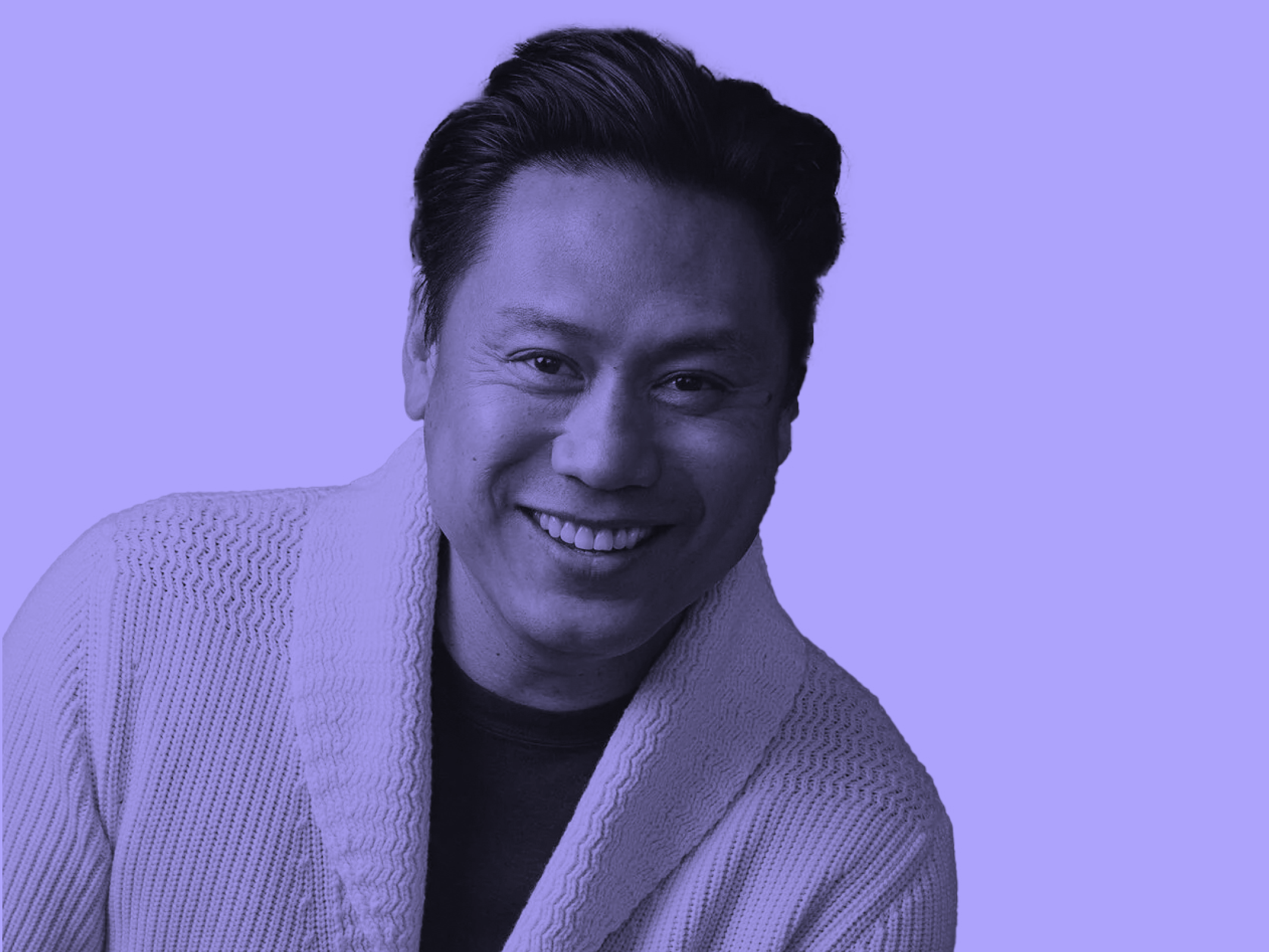
Phil (1969) © Chuck Close
In 2005, Adam Harrison Levy interviewed Philip Glass for a BBC documentary film about Chuck Close. Glass was seated in front of the monumental painting Phil (1969). The following exchange never made it into the final film. This interview was originally published May 12, 2009.
Adam Harrison Levy: What do you think about when you see Chuck Close’s painting Phil, 1969?
Philip Glass: I never really think of me as the picture, in fact it’s always just been an image. It’s an image that happens to be me. I don’t feel attached to it at all. Though other people might say, there’s Phil, but I never say that. I don’t think when Monet was doing haystacks, the haystacks thought, hey I’m the haystack — it’s just another haystack! I don’t think it was a portrait in the sense that when Rembrandt did a portrait or when Van Gogh did a portrait those portraits were partly to reveal some character of the person — those portraits were about the person. If this is a portrait at all, and I don’t think it is, its not about revealing the portrait of the person. It’s about revealing the artist.
AHL: You mean it’s a portrait in the other direction?
PG: The shift is completely the other way. Recently Chuck and I were talking about the fact he’s now being shown with portrait painters. Of course everyone knows that obviously he does portraits and yet in a way the enterprise of painting is what Chuck’s involved with, the occasion for him to exercise his art. He might’ve done something else. Once he got involved with portrait portraiture it — gave him the opportunity he needed to develop the clear aesthetic that we know but I don’t think he wanted to be a portraitist — is that the word?
AHL: It is now!
PG: I don’t think he’s thought of as a portraitist. I don’t think I ever thought of him as that way either. I think if you look at the work you see what the strategy of the work is and what the painterly style is — it has to do with technique.
AHL: Is there a parallel with what you were doing in music at the same time?
PG: The kind of music I was doing in the Seventies was very radical. The structure became the music itself. It became identical. In that way it was closer in a way to maybe Jasper Johns was painting and I was very influenced by his painting — when Jasper Johns did a painting of a flag, he painted a flag. So the question is: is it the flag or is it the painting of the flag? In the same way when I did a piece, I had reduced everything to scales and to a few simple notes. The process of the music became the structure of the music. So what was interesting for me was that the content and the form were identical — that was a very radical idea in music and in many ways it may still be a radical idea.
AHL: When did you start to explore these ideas?
PG: When I began this kind of work that would’ve been the mid Sixties. For the first ten years all I did was work with, let’s say grammar, with the vocabulary and the grammar. I didn’t really worry about anything else. That meant figuring out all the ways that scales can go up and down. It’s a very simple idea and yet if you do it exhaustively and you do it with every element, with rhythm and melody and harmony, you can spend ten years on it and I did.
AHL: And this music was welcomed by visual artists?
PG: It had very strong following in the art world because they recognised what I was doing. I played at the Whitney Museum in 1969 in a show called Anti Illusion. A woman named Marsha Tucker co-ordinated it. She was the curator at that time. We had passionate followers but also people who really hated it. The rate of change in art is very quick and the rate of change in music is glacial. I was already considered a complete barbarian by the music world, whereas in the art world it was — they wanted to know what’s new, what’s happening, what are people doing? And so I was much more comfortable in an artists’ environment. On the weekends we would visit all the studios, go to all the galleries. It was like a religious practice. On Saturday afternoon you went and visited all the galleries, that’s all everyone was doing. We were each other’s audiences. It was a very exciting time.
AHL: How has Chuck’s work developed since he painted Phil??
PG: I look at the painting that he does now and each unit, each cellular element is so expressive and so free. I think it always was but I think it’s more overtly so now. It looks like each stroke is improvised. What’s interesting about the new work is that it resolves the freedom and the structure into one thing. In the early work it looks like all structure and at a certain point it just tips over. It is an amazing thing to do, I think, for anyone whether you’re a writer or a painter or a musician, is to unify an expressive free way of working with an overall sense of form. I mean if you look at Rembrandt, that’s what Rembrandt does, isn’t it? You look at the strokes, and you say my God, how do those strokes make the picture?










